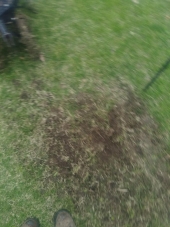posted 1 year ago
Great discussions and recommendations here so far. All I can add is my little bit of experience.
Almost 20 years ago (and well before I even heard about Permies, but I was loosely aware of No-Till), I started my present-day garden beds. I started out by double-digging with a spade. That proved to be absolutely back-breaking and was quickly a non-starter. So my wife and I went to the local big box store and looked at tillers. I really wanted a rear-tine tiller as I had borrowed one before and liked it, but I couldn't justify the cost. I ended up buying the cheapest front-tine tiller with the thoughts that if I needed more down the road, I could upgrade.
That little tiller admirably tilled up four small to medium sized garden beds (about 6'x12'). Make no mistake, this was still back-breaking work, but the work was much faster than being done with a spade. I did get some decent gardens that first year which I heavily amended with various organic material, especially leaves.
After the first tilling, the most important use of the tiller was tilling in the copious amounts of leaves that I piled up and tilled into the soil. I would have thought that the leaves would have turned my brown clay soil into black loam, but no. The soil marginally darkened and somewhat softened, but the leaves seemed to disappear. Whether this is from tilling causing rapid oxidizing of the leaves or that the leaves just don't have that much mass, I just don't know, but I tilled in multiple feet (once 4 feet!) into the beds over multiple years. The tiller was good for working into the soil, but I question what I have for results.
If I were doing things over again, I would either go no-till or till only once and work in organic matter with the single till. As it is, now I exclusively grow in wood chips that I pile on top of the soil (including new beds) which I break down with mushrooms into a fine garden bedding that effectively becomes my new topsoil. Worms love it and do my tilling for me and now I have a hard time telling where my bedding stops and where the old clay begins as they have merged together.
I eventually sold the tiller long ago. It was just taking up valuable space in the garage and was never used. I sold it cheap to get rid of it at a garage sale.
As for your own recommendations, my first suggestion is to pile on the organic matter and plant in a raised bed. If that is impractical, then I suggest renting a tiller as others have said (alternatively, hiring out the job works also). Third on my list of suggestions is to buy the cheapest tiller that you can, till once, work in whatever organic matter you can and then sell the tiller so that you are never tempted to use it again. Since I stopped tilling, my beds have gotten much, much more fertile.
These are all just my experiences and thoughts so please take from them what you can and do what you think it best.
Good luck!
Eric
Some places need to be wild

 2
2





 4
4




 5
5




 2
2




 3
3
















 5
5




 3
3




 4
4




 5
5




 2
2




 1
1




















